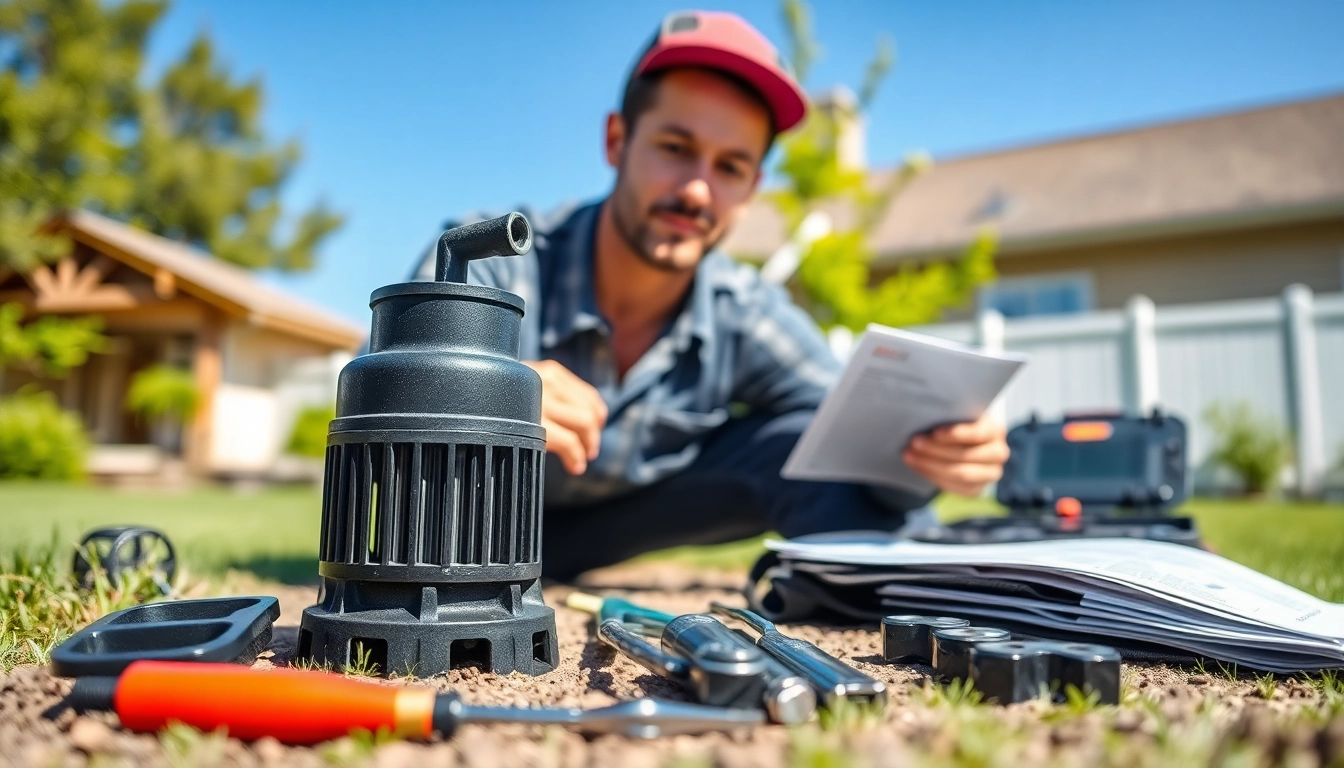Understanding Well Pump Replacement
What is a Well Pump Replacement?
A well pump replacement refers to the process of removing a faulty or inefficient well pump and installing a new one in its place. Well pumps are crucial for drawing water from beneath the ground and delivering it to your home. This process can be necessary for several reasons, including diminished water pressure, increased power consumption, or total pump failure. Ensuring that the right pump is selected and installed correctly is essential for the reliable function of your water supply.
Signs You Need a Well Pump Replacement
Recognizing the signs that indicate a well pump replacement is necessary can save homeowners time and money. Some common signs include:
- Inconsistent Water Pressure: If your water pressure fluctuates or is lower than usual, it could suggest pump failure.
- Unexpected Noise: Strange sounds from the pump, such as grinding or banging, can indicate mechanical problems.
- High Energy Bills: A spike in your electricity costs, especially without an apparent reason, may result from an aging or inefficient pump.
- Discolored or Dirty Water: If your water looks cloudy or has a strange taste or odor, it might signify a pump issue.
- Dry Well: If you’re not getting any water at all, the pump could have failed, or the water level in the well may be too low.
Types of Well Pumps
Well pumps come in various types, each designed for specific applications. Understanding which type is best suited for your needs is crucial when considering a well pump replacement. The two main types of well pumps are:
- Submersible Pumps: These pumps are located underwater in the well and are designed for deeper applications. They are known for their efficiency and ability to deliver water at high pressures.
- Jet Pumps: These pumps are typically used for shallower wells. They operate above ground and use suction to pull water from the well. Jet pumps can be more suitable for homes with less depth to their water source.
Cost Factors in Well Pump Replacement
Average Pricing and Quotes
The cost of well pump replacement can vary widely based on several factors, including the type of pump, depth of the well, and labor costs. Generally, homeowners can expect to pay anywhere between $2,800 to $6,000 for a complete replacement, with the average being around $4,000. It is advisable to obtain multiple quotes from contractors to ensure you’re getting a competitive price.
DIY vs. Professional Installation Costs
Some homeowners may consider a DIY approach to save on labor costs, but it is vital to weigh the pros and cons. While DIY can be less expensive, improper installation can lead to further complications and higher long-term costs. Professional installers not only guarantee correct installation but also provide warranties, increasing your peace of mind.
Hidden Costs to Consider
When budgeting for a well pump replacement, it’s essential to factor in hidden costs that can arise. These may include:
- Permits and Inspection Fees: Local regulations may require permits for installation, which can add to the overall cost.
- Electrical Upgrades: If your home needs wiring upgrades to support the new pump, this will increase expenses.
- Additional Repairs: Sometimes, related components like pressure tanks or piping may need repairs or replacements.
Choosing the Right Well Pump for Replacement
Evaluating Pump Types: Submersible vs. Jet
When selecting a new pump, it’s important to understand the strengths and weaknesses of submersible and jet pumps. If your well depth exceeds 25 feet, submersible pumps are usually preferred due to their efficiency in delivering water at greater depths. In contrast, jet pumps are suitable for more shallow wells and can be easier to access for maintenance purposes.
Matching Horsepower to Well Depth
Understanding your well’s depth is essential in selecting an appropriately powered pump. Generally, a 1 HP pump will work effectively for depths up to 25 feet, whereas deeper applications may require greater horsepower. Matching the horsepower correctly ensures efficient operation and prevents the pump from overworking.
Reliable Brands and Models
While there are several reliable well pump manufacturers in the market, researching and choosing well-reviewed models is paramount. Consider factors such as warranty, reviews, and performance metrics when selecting a pump. Investing in a quality brand can lead to better longevity and efficiency of the well pump.
The Process of Well Pump Replacement
Preparing for the Replacement
Before starting the replacement process, gather the necessary tools and equipment, and ensure you have outlined a plan. Notify your family about the procedure and, if needed, arrange for alternative water sources during the installation. It’s also advisable to check local regulations or permits required for well pump installation.
Step-by-Step Replacement Guide
1. Shut Off Power: Ensure that power to the pump is turned off to avoid any accidents.
2. Remove the Old Pump: This step may require pulling it up from the well or disconnecting it from the plumbing if it’s a jet pump.
3. Inspect the Well: Check for sediment, debris, or damage that may affect the performance of the new pump.
4. Install the New Pump: Follow the manufacturer’s instructions carefully to install the new well pump correctly.
5. Connect Power: Once the pump is installed, reconnect the power supply and test the new pump for functionality.
6. Monitor Performance: After installation, observe the water flow and pressure to ensure everything is working as it should.
Post-Replacement Maintenance Tips
Proper maintenance is key to ensuring the longevity of your new well pump. Regular checks on the pressure tank, water quality, and electrical connections can help identify issues before they turn into significant problems. It’s also beneficial to schedule an annual inspection with a licensed contractor.
Expert Tips and Tricks on Well Pump Replacement
Common Mistakes to Avoid
Being aware of common mistakes can save time and money. These include:
- Not Consulting Professionals: Always consult with experts to ensure you’re making informed decisions regarding pump selection and installation.
- Ignoring Specifications: Every well pump has specific requirements based on size and depth which must be adhered to for proper installation.
When to Call a Professional
While some homeowners may attempt a DIY replacement, certain situations warrant professional assistance. If you lack the necessary tools or experience, or if there are complications such as difficulty pulling the old pump, it’s wise to call an expert. Additionally, complex electrical work should always be handled by a licensed electrician to ensure safety.
Long-term Maintenance for Well Pumps
Long-term maintenance encompasses regularly testing water quality, scheduling annual inspections, and keeping the area around the well clean and free from debris. Implementing these practices can greatly extend the life of your pump and reduce the risk of unexpected failures.
Overall, understanding the nuances of well pump replacement, from costs to installation methods, can empower homeowners to make informed decisions. Adopting the right preventative measures will ensure the health of your well system and a reliable water supply for years to come.


